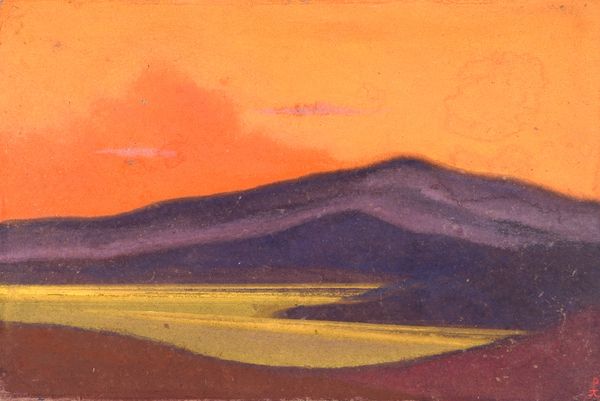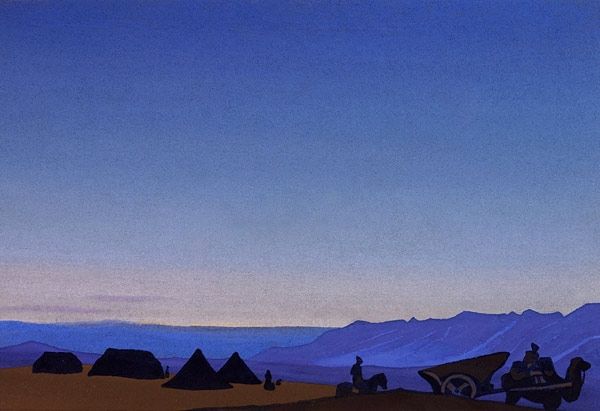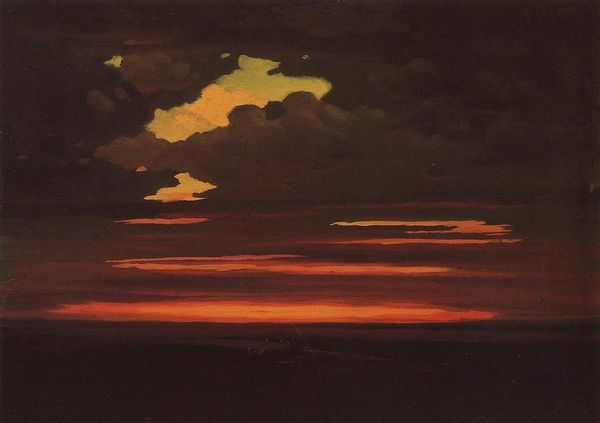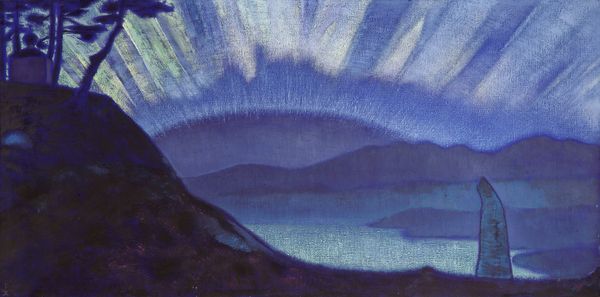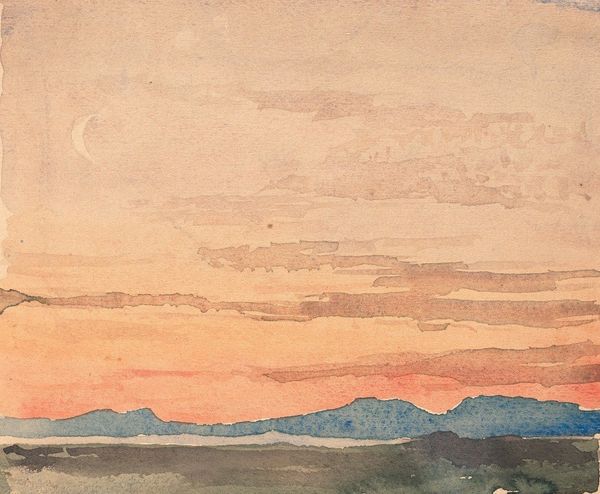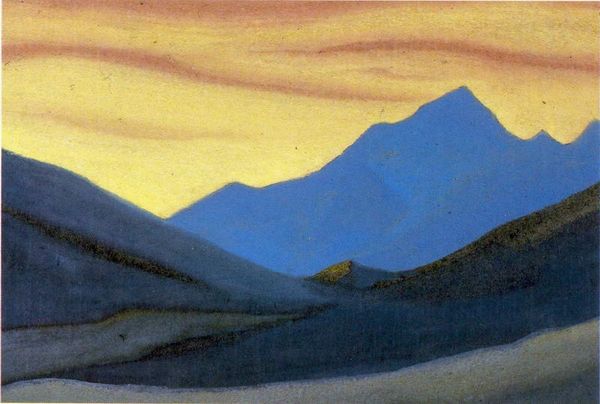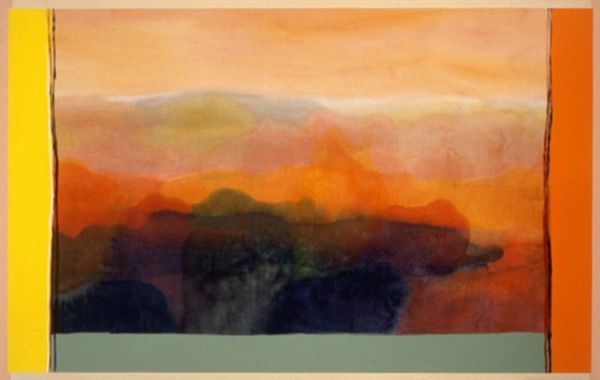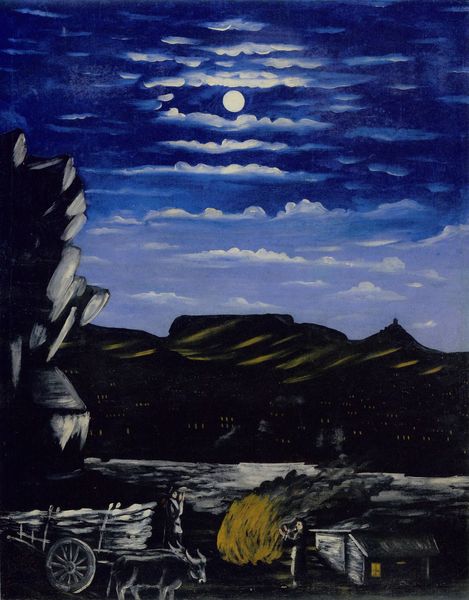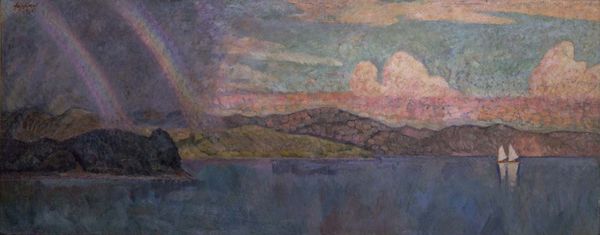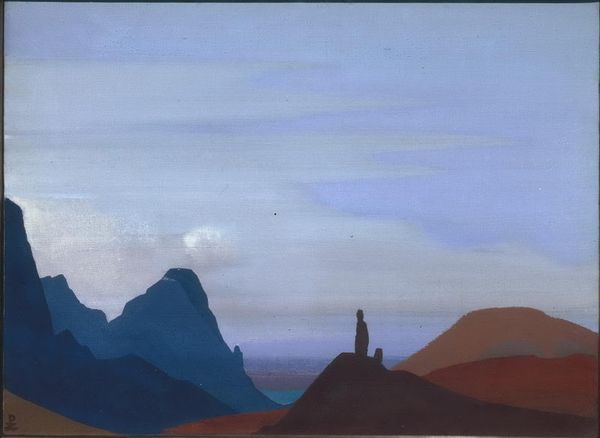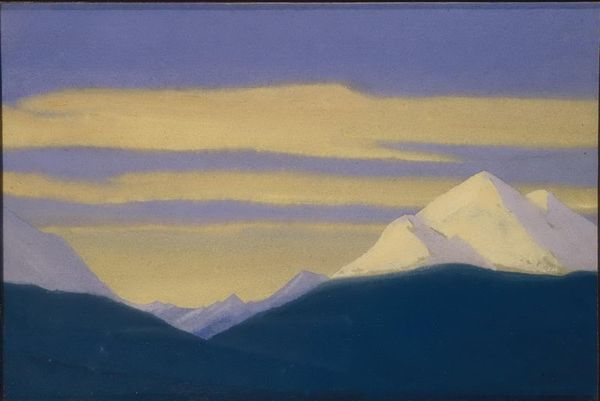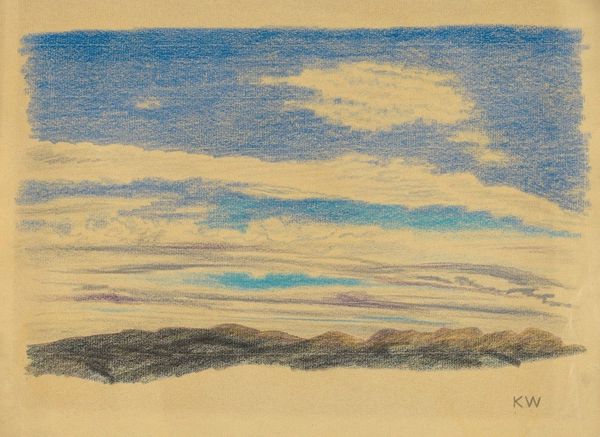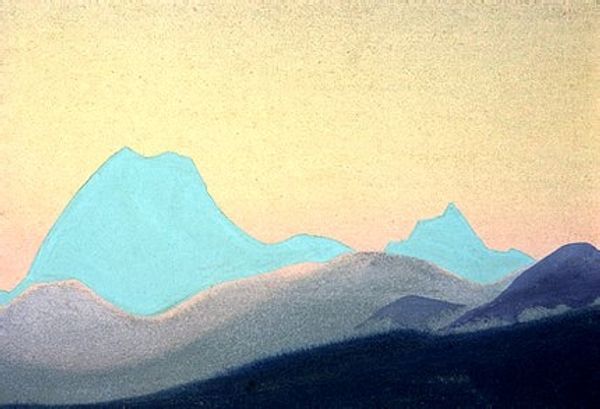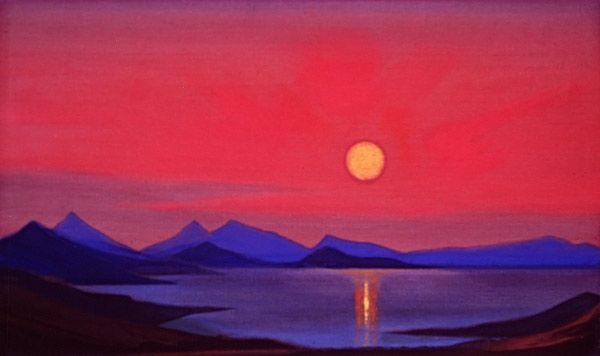
Copyright: Public domain
Curator: Here we have Luigi Russolo’s “Notturno,” painted in 1945. Russolo, of course, famously co-authored "The Art of Noises" manifesto and built noise-generating instruments called "intonarumori". Editor: It's evocative! Brooding colors. There's a thin veil of mystery layered within these shadowed mountain ranges. My initial impression is the striking flatness and blocky forms, but with an implied depth… It makes me curious about the techniques involved in achieving this. Curator: Well, knowing that Russolo worked primarily with tempera and later acrylic paint offers some insight. Given the painting's date, I expect acrylic on canvas. This period finds Russolo deeply exploring landscape painting through an expressionist lens. But I see something else, too. Do you detect any lingering echoes of Futurism, perhaps a visual counterpoint to his prior preoccupation with the auditory? Editor: The handling of paint betrays the hand, doesn’t it? You can almost feel the brushstrokes—economical but deliberate. The lack of overt Futurist dynamism seems… deliberate, given his history. I'm wondering what sort of labor went into layering these blocks of tone. Also, these somber pigments he chose, were these readily available, or were the materials scarce considering that this painting was made towards the end of the Second World War? Curator: Fascinating. Yes, this quiet landscape, compared to the explosive Futurist manifestos and noise machines, appears as a tranquil memory. These forms echo across historical boundaries, evoking older symbols—nature, nation, perhaps—rendered new, almost scarred by historical realities. Editor: Perhaps it is important not to assume it to be either completely. What’s striking is its… ordinariness? Or maybe familiarity is the right word. This landscape, so clearly defined by the process, offers both the universal comfort and uncanny anxiety we associate with ordinary material. The materiality itself lends the piece a weighty presence. Curator: Yes, I am sensing both dread and calm. The artist invites the spectator to bring new understanding by showing an everyday, abstracted landscape after such turmoil, to start anew from elemental and ordinary symbols. Editor: And understanding Russolo’s working method—how he manipulates the materials and engages the canvas—perhaps that's where the work yields its richest insights. Thanks. Curator: Agreed. It is through materials we start connecting with the landscape again. Thank you.
Comments
No comments
Be the first to comment and join the conversation on the ultimate creative platform.
